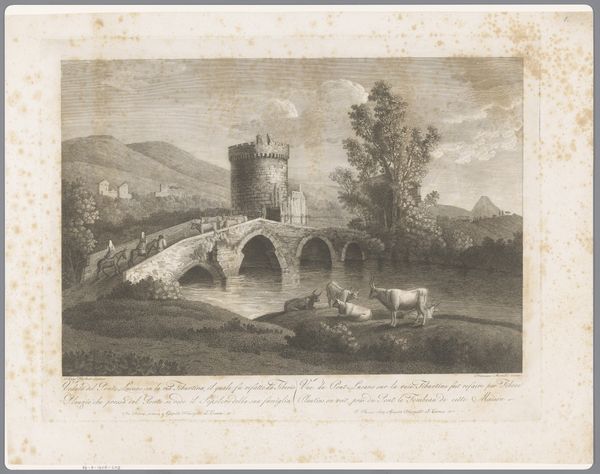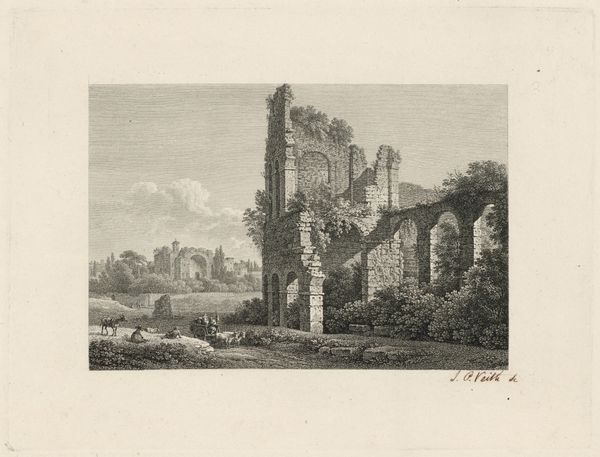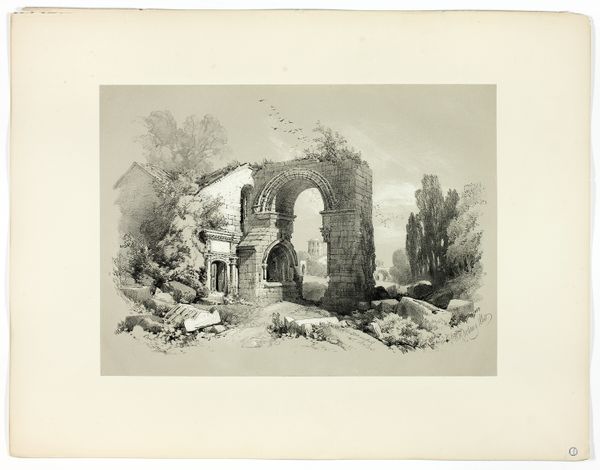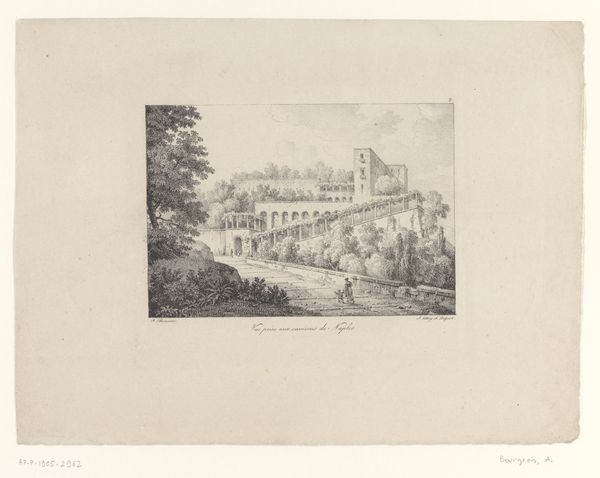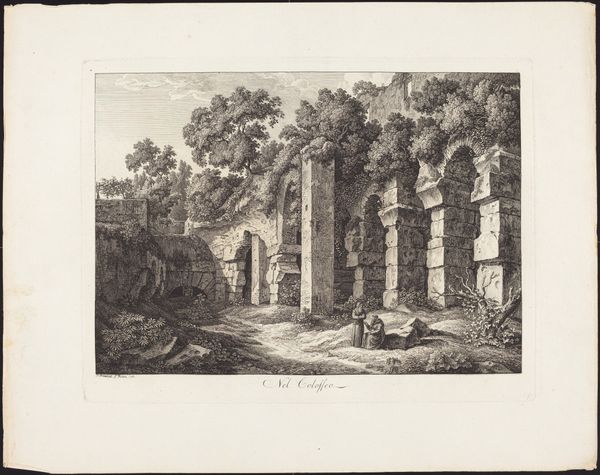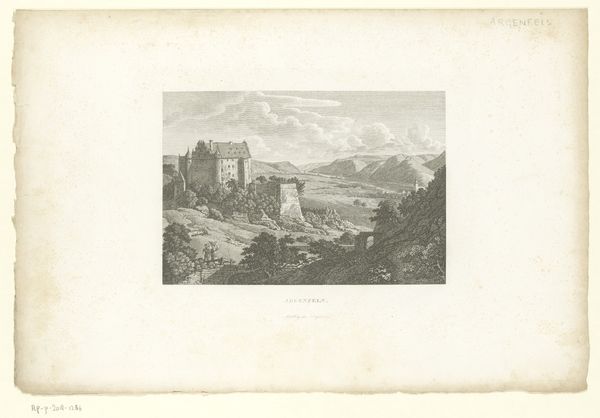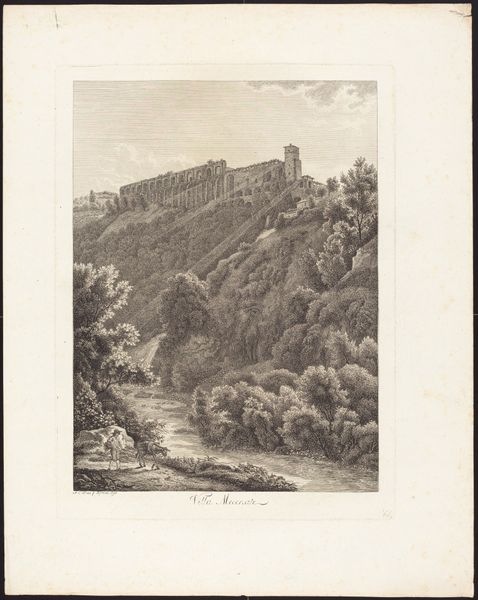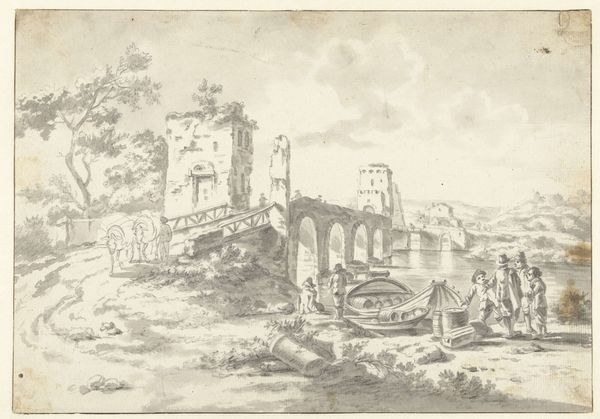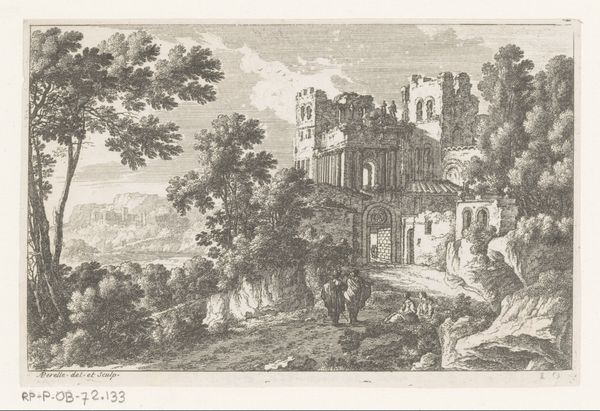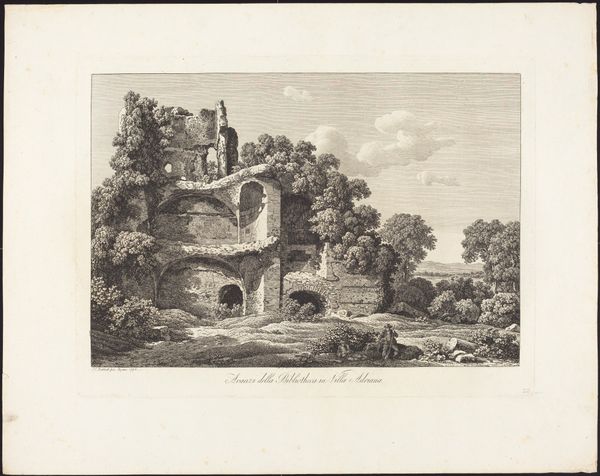
print, engraving
# print
#
landscape
#
romanticism
#
cityscape
#
engraving
Dimensions: image: 9.53 × 14.61 cm (3 3/4 × 5 3/4 in.) plate: 15.24 × 20.64 cm (6 × 8 1/8 in.) sheet: 18.1 × 23.02 cm (7 1/8 × 9 1/16 in.)
Copyright: National Gallery of Art: CC0 1.0
Philipp Veith rendered this image of the Capuchin Monastery and the Villa of the Emperor in etching. Dominating the landscape are the architectural ruins, with their arches framing the sky, symbols of the transience of earthly power and the enduring presence of the sacred. Observe how the arch, a motif of triumph and imperial authority in Roman architecture, persists in the monastic ruins. Its presence evokes a sense of continuity and adaptation. The same arch that once celebrated emperors now frames the lives of monks, suggesting a shift in spiritual pursuit. Consider the psychological weight of ruins—they speak to the inevitable decay of human endeavors. They echo through time, reminding us of mortality and the cyclical nature of civilizations. The arch, therefore, transcends its original intent, carrying within it layers of history. It echoes in triumphal gates, cathedrals, and even modern architecture, each time subtly altering its meaning while retaining a connection to its origins. This image engages us on a profound level, prompting reflections on the passage of time, the impermanence of worldly achievements, and the enduring human quest for meaning.
Comments
No comments
Be the first to comment and join the conversation on the ultimate creative platform.

